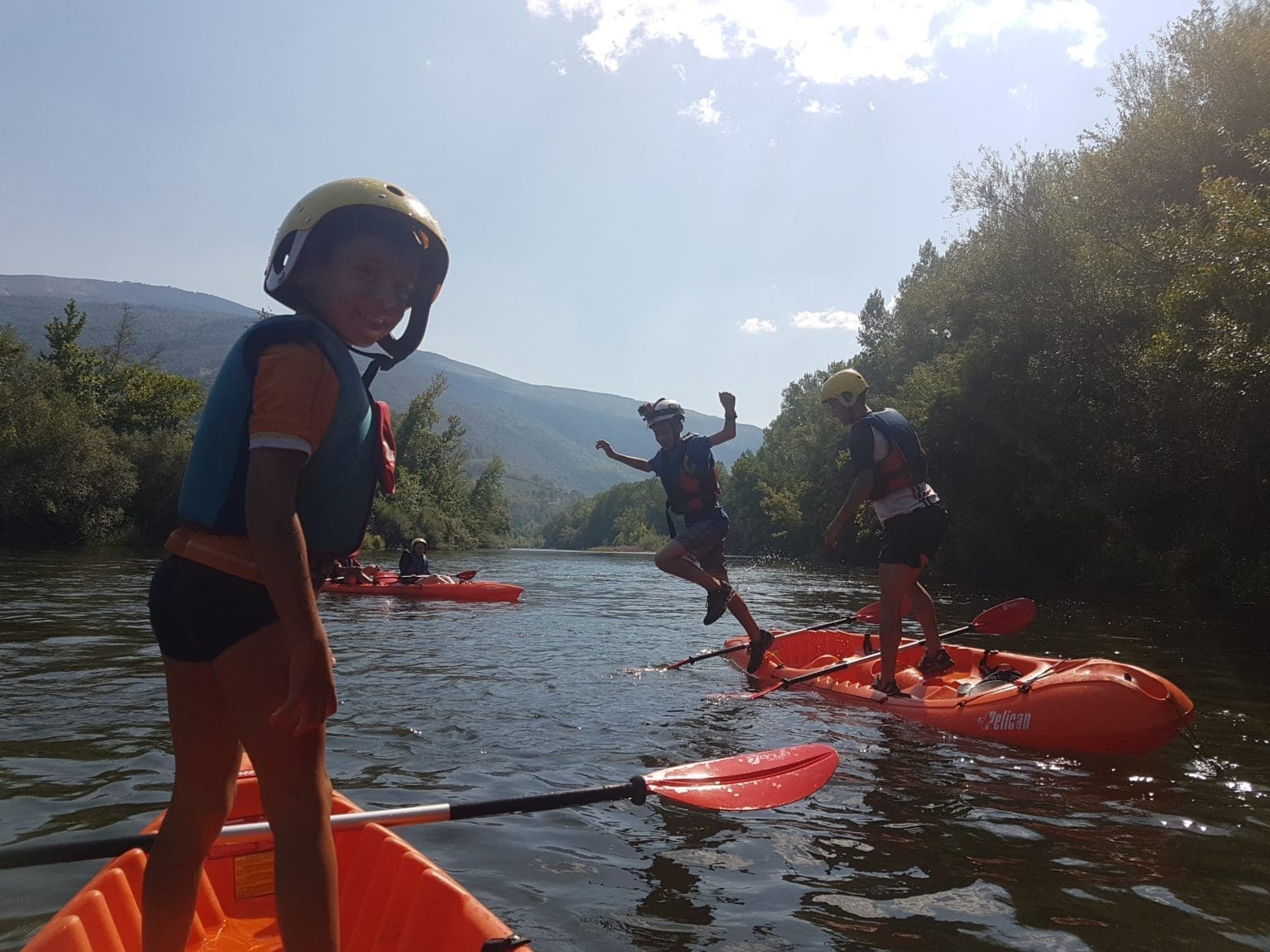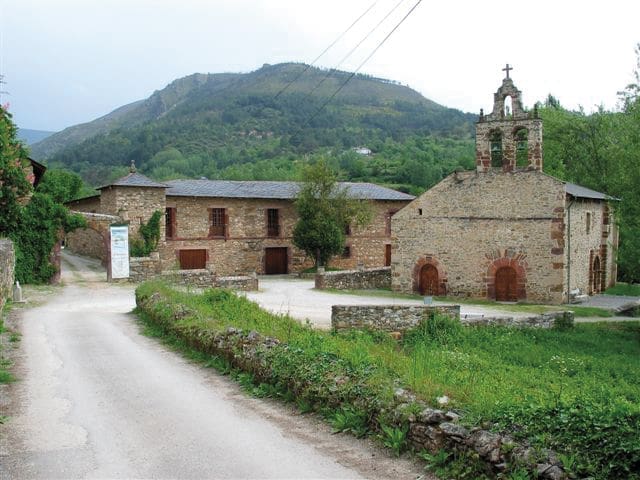The best way to get to the Valdeorras area is via the N-120. The first stop will be in A Rúa. The history of Rúa, like the entire region, is linked to Romanisation; the Foro Cigurrurum mansion was founded there, near the bridge that crossed the Sil, the Cigarrosa bridge.
In Rúa Vella, a Roman tombstone stands out, preserved on the façade of a house located opposite the church of San Estevo. The tombstone is of great importance as it is the place name Calubriga, a town of the Guigurros, that is known by it. It is dedicated to Lucio Pompeyo Reburro Fabro.
A pleasant place for bathing and resting is A Reza, on the banks of the Sil river, it is one of the spaces most deeply rooted in the feelings of the residents of A Rúa Vella.
The O Aguillón Recreational Area, in the surroundings of the San Martiño reservoir, is a unique place to enjoy nature. From Fontei, where its church stands out, closely linked to the figure of Gaudi, we can approach the Barranco Rubio, a viewing point with views of A Rúa and Petín, the San Martiño reservoir on the Sil river and the large extensions of vineyards.
In Petin, the Church of Santa María de Mones, a church located in an old fort, dominating the valley. Of Romanesque origin, the most peculiar thing is its decoration, which represents engravings identified with game boards of Roman origin.
Very close to A Rúa, Vilamartín de Valdeorras. The world of wine and winemaking tradition is very present in the Concello de Vilamartín with nurseries, wineries and ethnographic elements of great value such as the “covas”. In addition, this town hall is the headquarters of the Regulatory Council of the Valdeorras Designation of Origin. The wineries can be visited by prior reservation and the “covas”, some of which can be visited when they celebrate their own festival each year.
We made a detour to Córgomo and Valdegodos to see the open-air gold mines.
The municipality has a multitude of country houses, most of them with typical architecture of the area, in which the red stone stood out in a special way. The visit to the country houses can be an interesting route, since this municipality is the one with the largest number of houses with coats of arms in the entire region. Perhaps the most striking is the Pazo de Arnado or Castillo de Torre Penela with its two crenellated towers and those found in Portela.
Along the same N-120 road we arrive at Barco de Valdeorras, land of famous wine and capital of the bisbarra. Along the OU-533, in the town of O Castro, the tower and remains of an old castle stand out. To visit it, there are information panels and a metal structure inside to climb to the top, from where we can see fantastic views of the valley and Barco.
The Pazo de O Castro, currently a hotel, is a peculiar construction due to its structure and materials, with red stone, a typical element of the region, standing out. Inside, there is the original furniture, as well as various collections. In the same town there are caves “covas” for storing wine.
The monastery of Xagoaza, the original building was owned by the order of San Juan de Jerusalén, as can be deduced from the Maltese cross sculpted on the main door of the church of San Miguel, located next to the monastery and dating from the 12th century. Today it is a winery, which you can visit. Next to it there is a good area for rest and walking.
In addition, a path attached to the monastery leads to the Mariñán stream bed, which has beautiful waterfalls.
The Paseo de O Malecón is a must-see, with a pleasant recreational area on the banks of the Sil.
On the other side of the river is Viloira, with its pleasant square and the Casa Grande de Viloira where we can enjoy its gardens. Very close by is the viewing point on a pillar of the disappeared San Fernando bridge that was washed away by the flood of 1959.
The best viewing point in the area is in Alixo, you can get there by car to the village, and then there is a short walk to the viewing point.
Fervenza de Portomao or da Pincheira is a place to completely relax, let yourself be carried away by the sound of the water and spend an entire afternoon there. From the village of Fervenza, it is about 2 or 3 km and it is well signposted.
We must not forget the gastronomy of the area: Botelo, androlla, Valdeorras stew, maravallas empanada, chicharrones cake and of course, its Valdeorras Denomination of Origin wines, you can arrange guided tours of wineries with the Valdeorras Wine Route on its website.
There are kayaking and rafting routes on the Sobradelo River.
We finish the tour in Rubiá, where the Serra de Enciña da Lastra Natural Park is located.
First of all, and to get good information, we must go to the Park Visitors Centre, which is located in the town centre of Biobra. There are easy and signposted routes. It is a natural park with great interest in terms of flora and fauna.

 O Barco de Valdeorras, Galicia
O Barco de Valdeorras, Galicia














 Turismo de Ourense
Turismo de Ourense 


